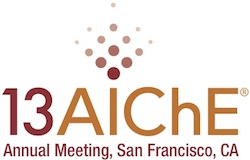

Carbon dioxide emission from fossil energy conversion is a major contributor to the greenhouse effect. Therefore , development of processes to effectively convert fossil fuels with smaller carbon footprints is highly desirable. Chemical looping schemes , which include chemical looping combustion (CLC) and chemical looping gasification (CLG) , have shown promise to convert carbonaceous fuels while capturing CO2 efficiently. CLG , in particular , uses a solid metal oxide based oxygen carrier in a redox process to convert carbonaceous fuels into CO2 , hydrogen , and heat in separate reactors , avoiding the energy intensive product separation steps. Currently , Fe based materials are oxygen carriers of choice for CLG processes since reduced iron oxides can effectively convert steam into hydrogen. The limitation of using Fe-based oxygen carriers is that they are relatively slow when converting carbonaceous fuels , especially those in solid forms. In order to address this challenge , we propose to incorporate a secondary metal oxide with oxygen uncoupling properties , e.g. CuO , to overcome the slow reactivity of Fe-based materials. A recent simulation study has shown that the addition of a small amount of CuO to a Fe2O3 oxygen carrier (9:1 molar ratio between Fe and Cu) can increase the efficiency of the process , resulting in higher H2 production rates. In the current study , a small amount of CuO based oxygen carrier is incorporated to a batch of Fe based material. TGA and fluidized bed experiments are conducted for chemical looping conversion of coal and methane. Significant increase in reactivity with coal char is observed with 5 w.t. % CuO addition. After the reaction , Fe-Cu spinel structure is not observed under XRD.
